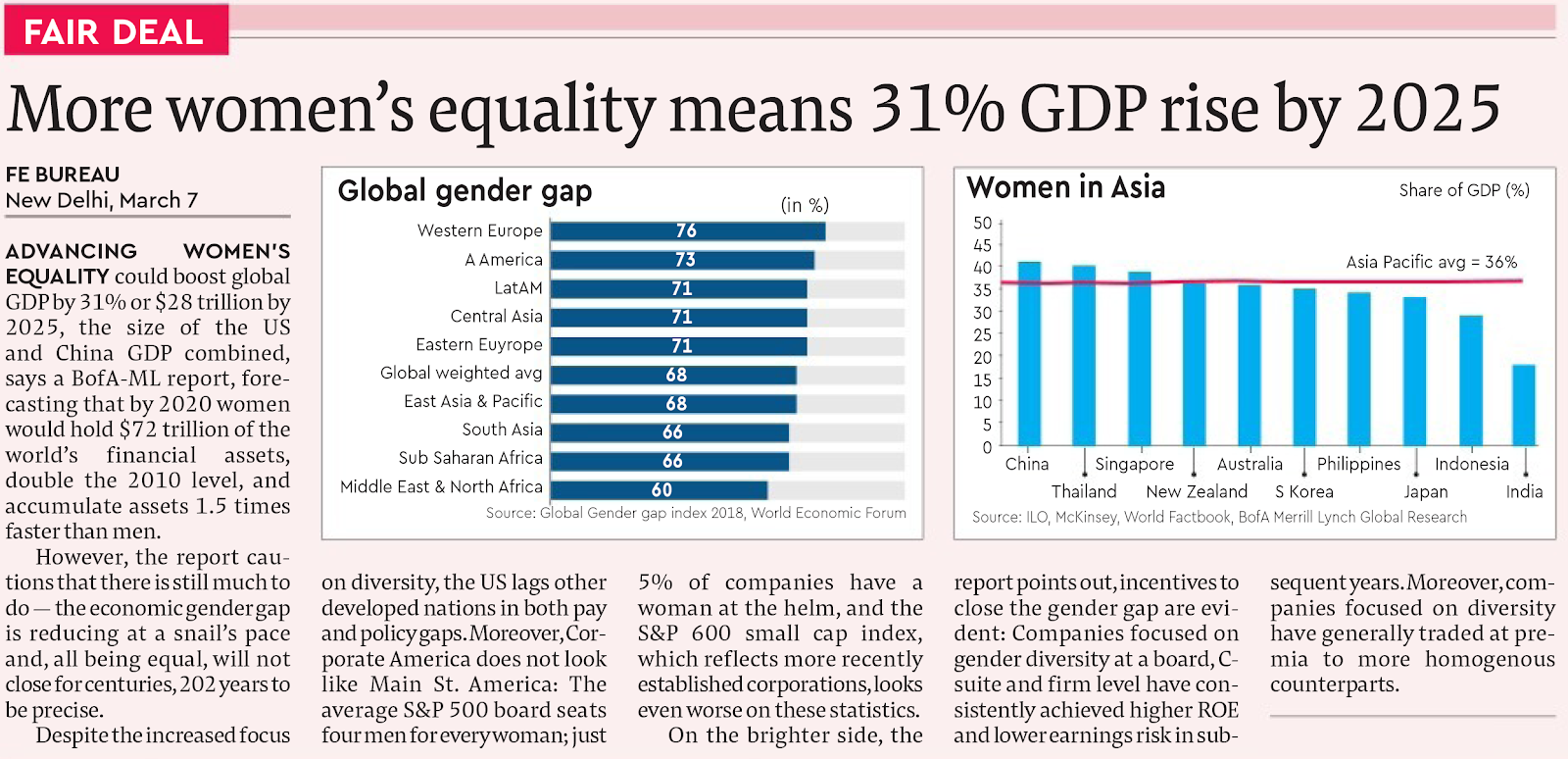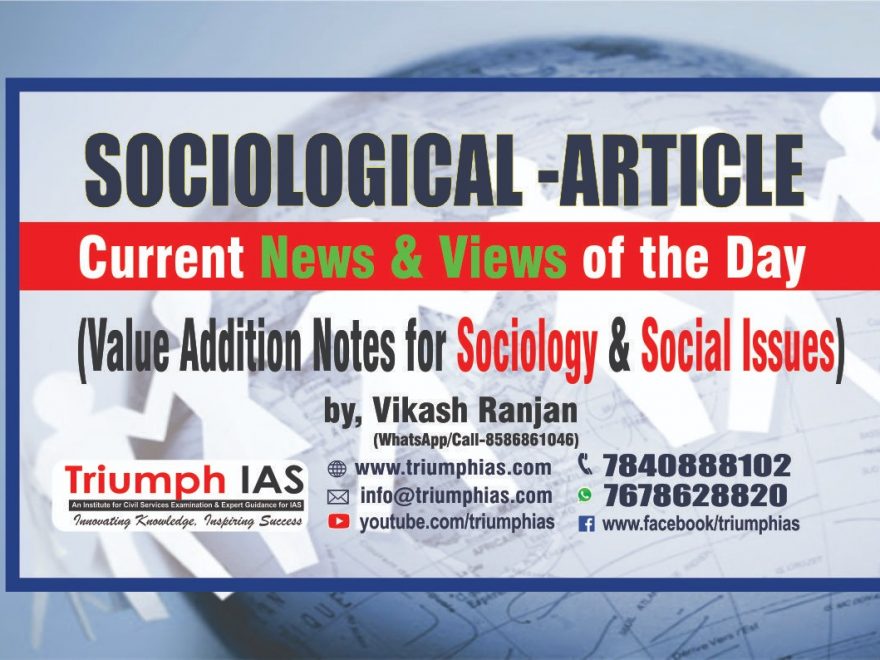Role of women and women’s organization: Closing the gender gap in science
Relevance: Sociology: Role of women: sexual division of labour & G.S paper I Society and Social Issues: Role of women and women organization
Context:

- India celebrates National Science Day on February 28 every year to mark C.V. Raman’s discovery of the scattering of light.
• For the last 33 years, on this day, research institutes and other academic centres in the country have been holding public outreach programmes or conducting meetings on select topics.
About the theme:
- This year, the theme was Women in Science.
• This is a timely and relevant theme, but it is also rather ironic given that Raman himself did not warm up to the idea of women in science.
• For some time, this prejudice meant that women candidates were refused admission to the Indian Institute of Science in the 1930s, during Raman’s tenure as director.
Lost opportunities:
- Despite his progressive political and philosophical convictions, Raman was a traditionalist.
• Like many others of the time, he imbibed the sexist views that were part of society then. Among his three women students, only Anna Mani was able to choose a scientific career, although she could not get a doctoral degree.
• Sunanda Bai was not awarded a PhD, and committed suicide for unknown reasons.
• Lalitha Doraiswamy left her studies and chose to marry Subramanyan Chandrasekhar, who was awarded the Nobel Prize in Physics in 1983.

Why did these talented women fail to get their due?
- It would be interesting to contrast their journeys with the story of Janaki Ammal. Ammal opted to pursue a Masters degree from the Michigan State University in the U.S. and continued her scientific career even after her return to India.
• The success of Janaki Ammal, who chose to leave India, versus the stories of the other women tells us about lost opportunities.
• The cultural and gender norms that engendered discrimination even during a renaissance of sorts in India was a major reason why the country lost out on an important opportunity to build a culture of including women in science during the pre-Independence days.
• These stories of gender discrimination help in our understanding of the current discourse on the social and organisational conditions that regulate women’s participation in science education and research.
Initiatives taken towards social transformation:
- It is true that a resurgent inclusive nationalism propounded by Mahatma Gandhi, Rabindranath Tagore, Jawaharlal Nehru and others during the struggle for Independence encouraged women, at least those who were part of the upper social strata, to break the familial and cultural shackles and enter the public space.
• While cultural and social causes are considered the primary reasons for gender discrimination, at least in India, organisational factors have also played a big role in preventing gender parity in science.
• This can be changed if more women are given leadership positions.
• Lack of women leaders and women role models may be preventing more women from entering the field.
• Compared to the pre-Independence days, one encouraging fact is that there is an exponential growth in the participation of women in the undergraduate and graduate levels.
• In the U.K., women account for 40% of undergraduate students who pursue degrees in the physical sciences and mathematical sciences and 14% in engineering and technology.
• In India, the corresponding figures are about 40% and 18%, respectively.
• More than 40% of PhD-holders in India are women. These figures, according to various estimates published in Current Science, show that social shackles are loosening.
The ‘leaky pipeline’ problem:
- However, the trouble starts after women obtain their educational qualifications.
• The percentage of women in faculty positions drops to less than 20%; only a few reach the top positions of institutes and universities.
• This is also the time when many of them become mothers, sometimes because of familial pressure.
• The Indian Science Academies are aware of the problem. But the reform should start from their own backyard. In all the three science academies combined, only about 10% are women Fellows.
• Including more women in science is not only important from the human rights perspective; it also impacts the quality of science and the advancement of society itself.
• This is not to say that the situation is hopeless. There have been changes that give us hope too.
• The role of women engineers in the launch of the Indian Space Research Organisation’s second moon mission, Chandrayaan-2, is now legendary.
India’s performance in Global Gender Gap Index 2020:
- According to the Global Gender Gap Index 2020, a study covering 153 economies, India has slipped to the 112th spot from its 108th position in 2018.
• The report also says it would take nearly a hundred years to close the gender gap in various fields in India compared to the time it would take in other countries.
• The Indian scientific community should act as a pressure group to build greater focus on the issue and push for concrete measures to address the problem. As a simple first step, India should relax certain norms for women.
• The expansion of maternity leave to 26 weeks from the previous 12 weeks shows that the present government is seized of the matter, but how this will affect the hiring of women workers is yet to be seen.
Way forward:
- Women across the world face the ‘leaky pipeline’ problem.
• Without supportive institutional structures in place, women, when they are pregnant, worry about gaps in publications, how they will do fieldwork, whether they will get promotions.
• Productivity concerns are high for women, especially in academia where the number of papers you publish is a marker of productivity.
• In India, we have many examples of women researchers who are involved in exciting scientific experiments.
• It is imperative that we understand and remove the sexism and institutional obstacles that prevent more women from entering the scientific field.
For more such notes, Articles, News & Views Join our Telegram Channel.
Click the link below to see the details about the UPSC –Civils courses offered by Triumph IAS. https://triumphias.com/pages-all-courses.php

